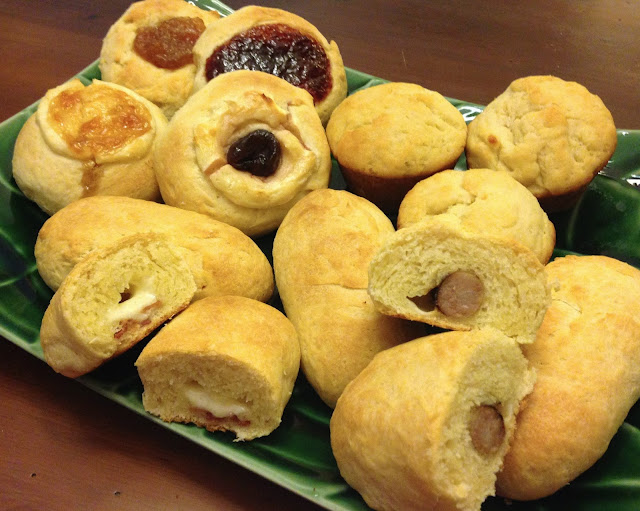Most of us know about sugar plums from the famous poem, "'Twas the Night Before Christmas" or from the Sugar Plum Fairy in Tchaikovsky's "The Nutcracker". Those sugar plums, however, refer to a candy called a comfit which is a nut coated with multiple layers of sugar, something akin to a Jordan almond. The sugar layers were incredibly difficult to apply, and comfit were usually lumpy and unevenly shaped. Only the most skilled confectioners could create comfit that were perfectly smooth, like the skin of a plum, hence the name "sugar plum".
But, these are not the sugar plums that caught my attention.
Sugar plums are one of the last plums to mature in the summer growing season. Sugar plums are known for their dark purple skin with a white bloom, and they have a higher sugar content than other varieties. In fact, sugar plums are usually dried into prunes because of their natural sweetness. They are are also a great variety for baking and pastries. With all of the craziness this summer--packing, moving, getting settled in my new town--it's been a while since I've been able to play with desserts in my kitchen. The sugar plums were the perfect excuse. Enjoy!
Sugar Plum Tart with Honey and Thyme
Makes 1 9-inch tart
For the crust:
1 ¼ cups all purpose flour
1 teaspoon Kosher salt
1 stick unsalted butter, cold and cut into tablespoon size pieces
3 to 4 tablespoons cold water
For the filling:
1 ½ pounds fresh sugar plums, cut in half and pit removed
¼ cup honey
2 teaspoons fresh thyme leaves
Preheat the oven to 375° F and place a rack in the center.
To make the crust, place the flour and salt in the bowl of a food processor and pulse to mix. Add the butter pieces and pulse until the mixture looks like damp sand with pebbles.
Add about 2 tablespoons of water and pulse to mix through. Add additional water, about ½ a tablespoon at a time, pulsing the food process to mix, until the dough just begins to come together into large pieces.
Turn the dough out onto a clean work surface and bring it together into a round flat disk. There's no need to knead the dough, just press it together. Kneading it will only further develop the gluten and toughen the dough. Forming the dough into a round flat disk will make it easier to roll out later, the dough will tend to stay in the shape it starts in.
Wrap the dough disk in plastic wrap and place in the refrigerator for a minimum of 30 minutes. This will allow the butter to get cold again, it allows the flour to fully absorb the water and the dough to evenly hydrate, and it will allow the gluten to relax. You can also freeze the dough at this point, a great way to get ahead of your holiday baking.
Remove the dough from the refrigerator, unwrap it and place it on a lightly floured work surface. Roll out the dough into a 12 inch circle about ¼ inch thick. (Dough circle should be large enough to cover the bottom of the pan and come up the sides with about ½ inch to an inch hanging over.) Carefully lift the dough and place it into a tart pan with a removable bottom, and using the back of your hand and knuckles, fit the dough into the base of the pan. Fold the overlapping edge of the dough over and down into the pan, so the top edge of the dough is just touching the inside bottom edge of the tart pan, making a double-thickness of dough around the side walls of the tart. Gently press the two layers of dough together with the back of your knuckles. There will be excess dough protruding up above the edge of the tart pan--using your thumb, press the dough out and across the sharp edge of the tart pan to cut/break it off. Place the tart pan in the freezer for about 15 minutes to re-chill.
Remove the tart shell from the freezer. Starting from the outer edge, arrange the plum halves in overlapping concentric circles until they completely cover the bottom of the pan. Drizzle the plums with the honey and sprinkle with the thyme leaves.
Bake in the over until the plums are softened and the crust is lightly browned, about 45 to 50 minutes. Remove the tart from the oven and allow to cool completely in the pan. Before serving, careful remove the tart from the pan--be sure to take the tart off of the round metal base plate as well. Serve warm or at room temperature.
Remove the tart shell from the freezer. Starting from the outer edge, arrange the plum halves in overlapping concentric circles until they completely cover the bottom of the pan. Drizzle the plums with the honey and sprinkle with the thyme leaves.
Bake in the over until the plums are softened and the crust is lightly browned, about 45 to 50 minutes. Remove the tart from the oven and allow to cool completely in the pan. Before serving, careful remove the tart from the pan--be sure to take the tart off of the round metal base plate as well. Serve warm or at room temperature.















